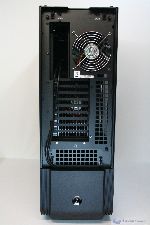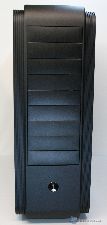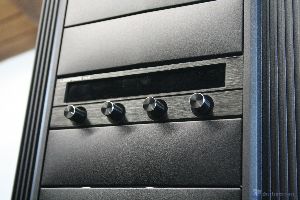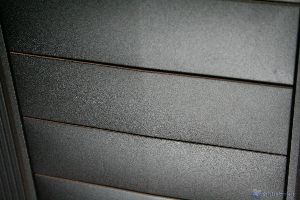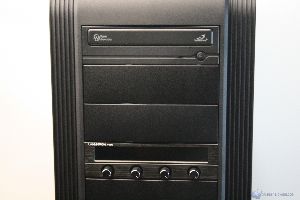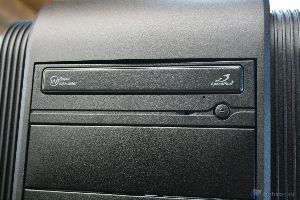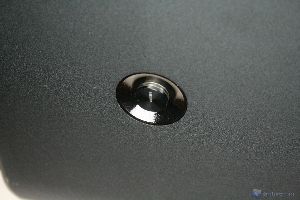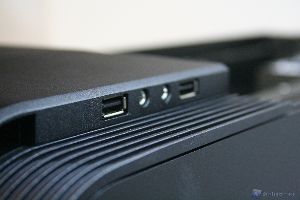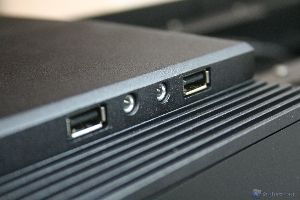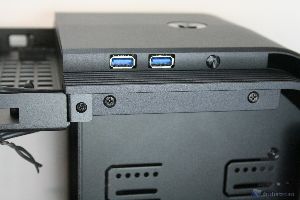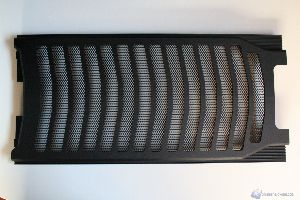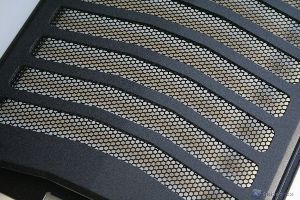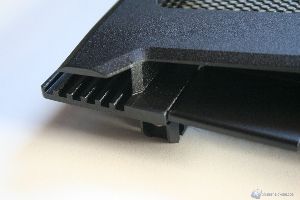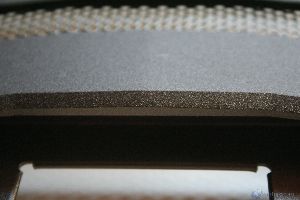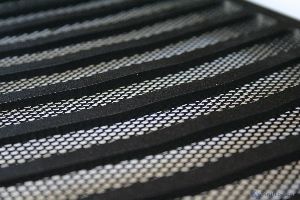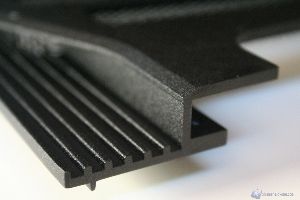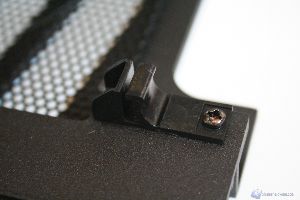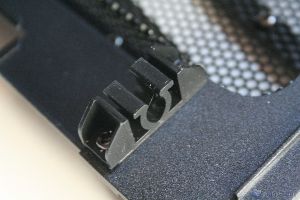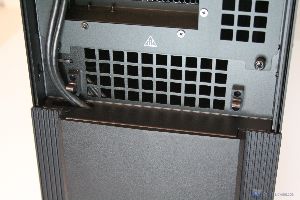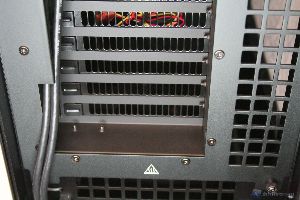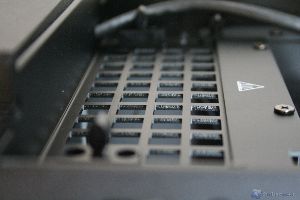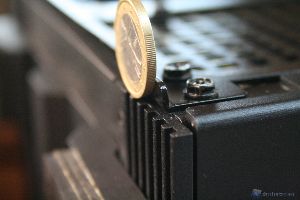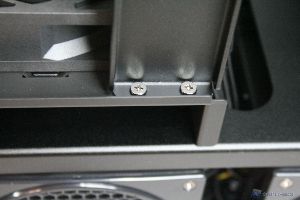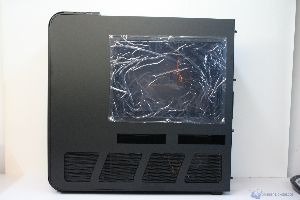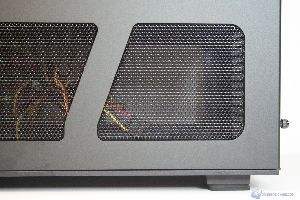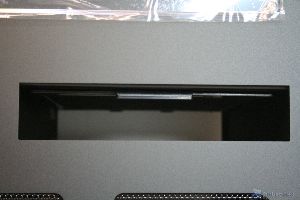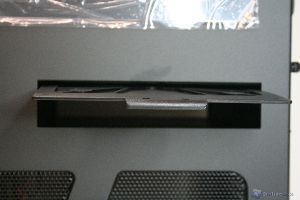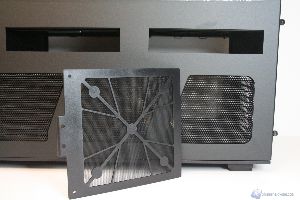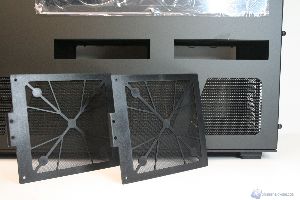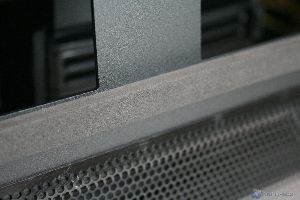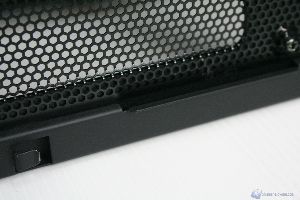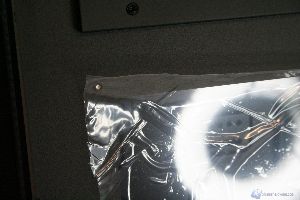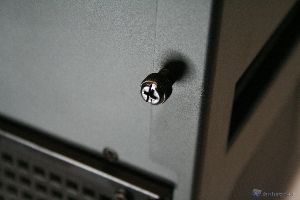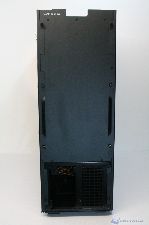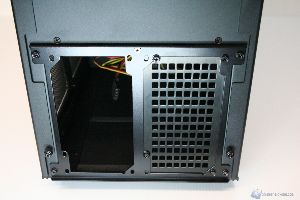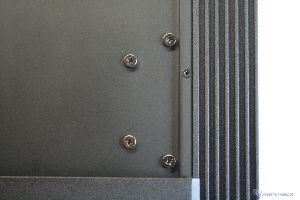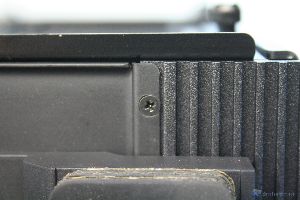SilverStone TJ11, external analysis
The case gives the impression of being exceptionally solid, similarly to the FT02LE previously reviewed. However, in this case, because of its height, the rear handle for carrying is not present. In the FT02, it was modeled from the single unibody piece of the main frame and it was very comfortable and sturdy. The painting is sublime and you can not damage it or scratch it without doing a lot of pressure. This model is characterized by a black external painting and a big windowed panel.
Front and upper part
The front of the TJ11 is characterized by a single body structure, which in this case is called "double unibody": this means that SilverStone has tried to further improve the previous models, in terms of sturdiness and design. This kind of process is very demanding because it requires very advanced and expensive techniques, with elaborate and very precise industrial machinery. The frame is made entirely of aluminum, with a thickness of 2mm, and is commercially available only in black color. The 5,25" front covers have a classic satin finish of excellent quality and are also made of aluminum. There are nine 5.25" slots and, in the lower part, there is not the SilverStone logo: in fact, it has been replaced by one of the two power buttons. The other one is located in the upper faceplate. In the upper part, both the USB connectors and inputs for microphone and headphones are positioned laterally, in a raised profile specific for these components; besides conferring elegance to the case, it makes inputs invisible from the front.
In addition to the two beautiful sidebands, we want to show you the final overview of the front with 5,25" peripherals installed:
On the top there is a large removable mesh, which allows the flow of hot air from the below 120mm fan and graphics cards air vents. This mechanism exploits the upward heat convection: the so-called stack effect.
There are no front fans as we are used to think about, similarly to the TJ04-Evolution, but thanks to the presence of two 180mm fans and the rotated position of the motherboard there is no need. So, in the upper part, we will not find the PSU; however, there are nine expansion slots which have ventilation openings (*), a perforated cover and finally the upper 120mm fan. The classic motherboard I / O shield is placed in standard position and you can see, near that, the fan controller.
Some additional details, like the thickness of the body and details of the finishing:
(*): Because of the phenomenon of positive vertical pressure, PCI slots are perforated by choice: in this way the air coming from below will be exhausted from above, preventing the potential recirculation of hot air inside the GPU. In TJ09, instead, that has a classic ATX configuration, SilverStone have closed these openings due to the absence of positive pressure, which helps to solve the problem of warm air loop in classic ATX cabinets.
Left and right sides
On the left side there is a big windowed panel, the two holes for direct ventilation (through AP-181 fans) and the four lower openings for passive ventilation of the base of the cabinet, well isolated from the rest. It is not absolutely necessary the lateral ventilation thanks to the particular stack effect system.
Some details:
Rear and lower part
In the rear part of the TJ11 there is almost nothing because the traditional configuration has been moved to the top:
At the bottom, instead, we have a rubberized horizontal strip placed at the front and two rear supports which allow to reduce the transmission of vibrations from the cabinet to the floor. It is not possible to mount wheels for moving the cabinet.
Let's now analyze the interior.

